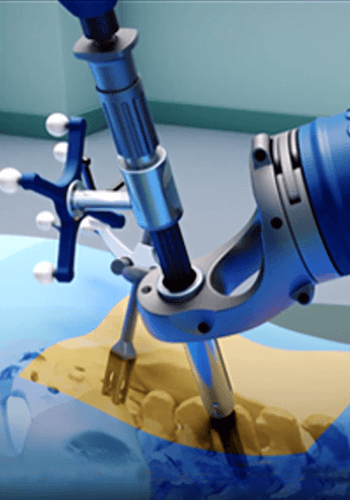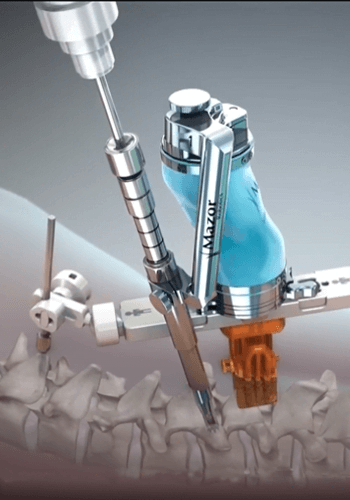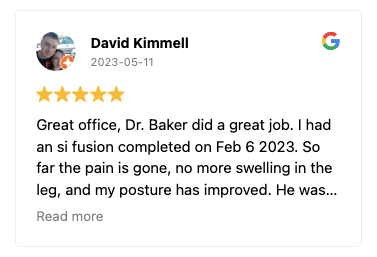Robotic Spine Surgery
Robotic surgery allows surgeons to perform complex and delicate procedures with minimal risks accurately
Robotic spine surgery is also called robot-assisted surgery, which reduces tissue dissection by allowing us to make minimal openings, and there will be less disruption to normal anatomy. Through robotic spine surgery, complex procedures are done with more precision, control, visualization, and flexibility.
A clinical robotic surgical system with 3D imaging and computer science guidance ensures the maximum accuracy in spinal implantations with minimizing the risks and complications. This advanced surgery is a viable tool that enables higher precision and long-lasting results, especially in spine-related cases.
Request an Appointment
Why Is Robotic Spine Surgery Needed?
Your spine supports your whole body because it protects the nervous system. Any spinal problem can lead to severe pain and disruption in vital body organs and systems. Non-surgical options are sometimes insufficient to treat a specific spine disease or disorder. Robotic spine surgery is preferred for several spine-related issues, especially for:
- Spinal deformities correction
- Tumor resection
- Minimally invasive decompression
- To remove spinal infections
- To treat degenerative spine conditions
- Anesthetic block of nerve pain
- Minimally invasive anterior, posterior, and lateral fusion
- Vertebroplasty for spine compression fracture

The Benefits of Robotic Surgery

Robotic surgery allows surgeons to perform complex and delicate procedures with minimal risks accurately. Here are a few benefits: robotic spine surgery is preferred over traditional surgical options.
- It reduces tissue damage and controls blood loss
- Spine surgery robot gives you smaller scars, so there is less risk of infection
- Patients recover more speedily than traditional surgeries
- Greater precision gives better results
- Safest surgical option due to less exposure to radiation for both patients and surgeons
Frequently Asked Questions about
Robotic Spine Surgery
How Is Robotic Spine Surgery Done?
Robotic spine surgery is less complicated and more precise than traditional surgeries. This most advanced surgical system has a camera arm and a surgical arm with surgical instruments attached.
The surgeon controls both arms while sitting at a computer console near the operating table. The surgeon can clearly see the 3D, highly magnified surgical site view.
On the day of surgery, medical images are taken and imported into the spine robot. Your surgeon uses these images to determine the size and placement of screws and create a surgical plan based on your anatomy.
The surgical plan guides the rigid robotic arm to a specific region of your spine, similar to a planned route or pathway on a GPS. The surgeon uses this pathway or route to place screws using instruments accurately.
Throughout the procedure, the surgical instruments and implants are continuously displayed on the screen for the surgeon and staff to view during surgery. This display allows the surgeon to view live feedback during your procedure.
What are the Risks Associated With Robotic Spine Surgery?


Dr. Baker specializes in neurosurgery, neurosurgical spine surgery, neurotrauma, brain tumors, spinal tumors, and peripheral nerve damage treatment.









